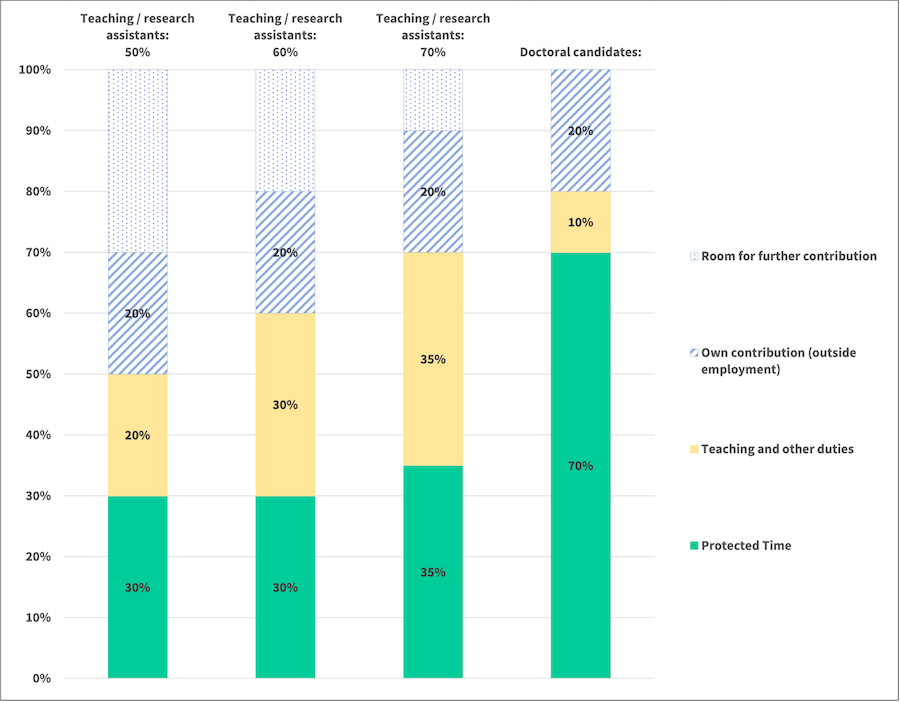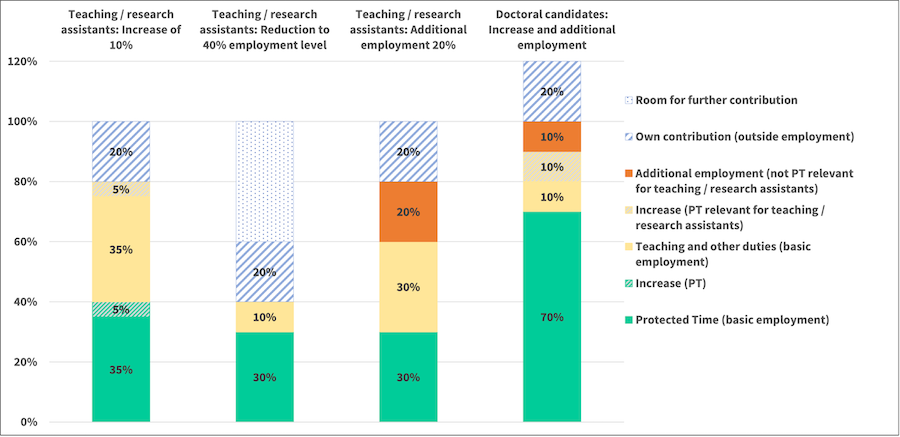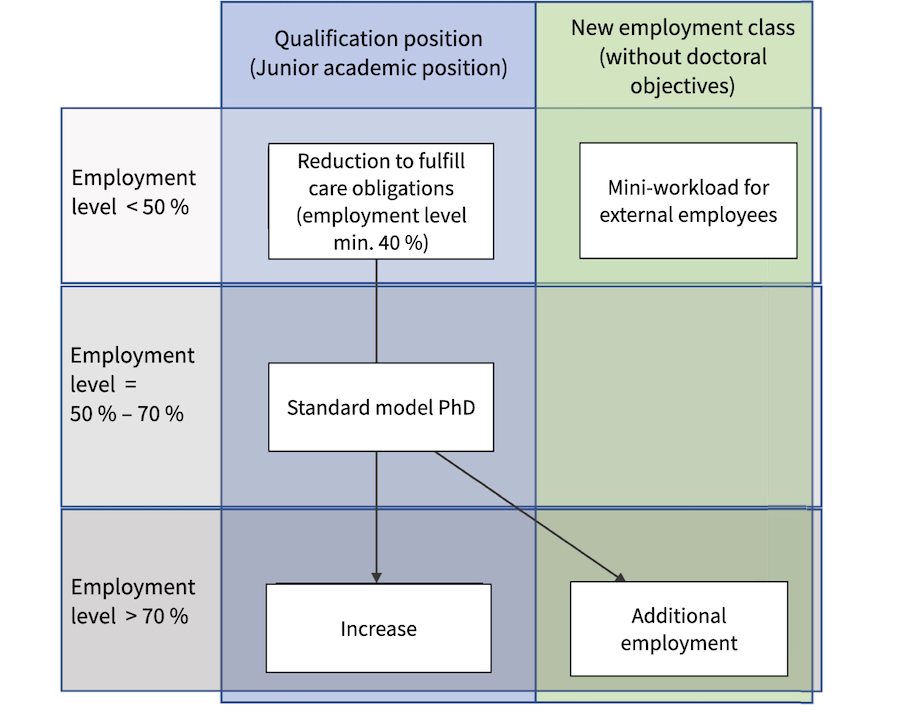Models and parameters
Table of contents
Parameters
Doctoral candidates - new
80 % as standard employment level (salary = SNSF rate, as before), research time within employment uniformly at a minimum of 3.5 working days per week (= 70 % full-time equivalent)
Teaching / research assistants - new
50 – 70 % as a range of employment levels (EL); uniform approach of 1.5 working days as a lower limit for own research (protected time) in the case of
- EL ≤ 60 % = 30 % of a full-time equivalent
- EL> 60 % Protected time requirement of 50 % of the EL applies
Protected Time
In addition to protected time, doctoral candidates and teaching / research assistants can be assigned teaching tasks for further work. However, the corresponding tasks must be relevant to the qualification.
In the sense of personal further qualification, PhD candidates at UZH are expected to make a significant personal contribution to the achievement of the doctorate. The personal contribution is now explicitly stated in the doctoral agreement and amounts to at least 20 % of a full-time position.
Overview
| Function
|
Employment level (EL) | Minimum working time for own research (Protected Time) (*1) |
|---|---|---|
| Doctoral candidate | 80 % as standard (*2) | 3.5 working days per week (= 70 % full-time equivalent) |
| Teaching and research assistant | 50 –70 % as a standard range (*3) | 1.5 working days per week for EL ≤ 60 %. 50 % of EL for EL > 60 |
| (*1) Logic of yearly working time: the amount of protected time can vary within the year (e.g. obligations of chair support), but must be guaranteed over the course of a year. |
| (*2) Lower workload only as an exception in justified cases (parenthood or other care obligations). Protected time minimum should remain in place even in these cases. PhD candidates with family care obligations have the possibility to reduce their workload. However, the minimum workload must be 40 percent. |
| (*3) Top-up for taking on additional tasks possible. |
Standard model and deviation
Illustration 1: Representation of the standard model
Need for new employment category
Since in the future teaching and research assistants or doctoral candidates will no longer be employed to relieve chairs, institutes, and seminars of tasks that are not relevant to qualification, there is a need for a job category with the new model for junior academic positions that allows for the following types of employment:
- Temporary employment (> 1 year) of persons with an MA degree without a doctoral degree to support teaching and research (e.g. for collaboration on research projects, publications or service assignments of the chair, supervision of students, organization of study trips, events or conferences, maintenance of websites and social media as well as administrative activities). This also includes small-scale employment of persons who pursue a full-time occupation outside UZH.
- Temporary secondary employment (> 1 year) of persons in junior academic positions as top-ups for additional tasks, including teaching tasks.
To compensate for this, a 2-year pilot project (2024-2025) will create the possibility of employing academic staff for such activities on a fixed-term basis for a longer period than before. Specifically, the fixed-term duration will be increased from one to two years. The pilot phase will be used to more accurately assess and understand the need for temporary academic staff outside of junior academic positions and third-party funded projects.
Illustration 3: New employment categories


